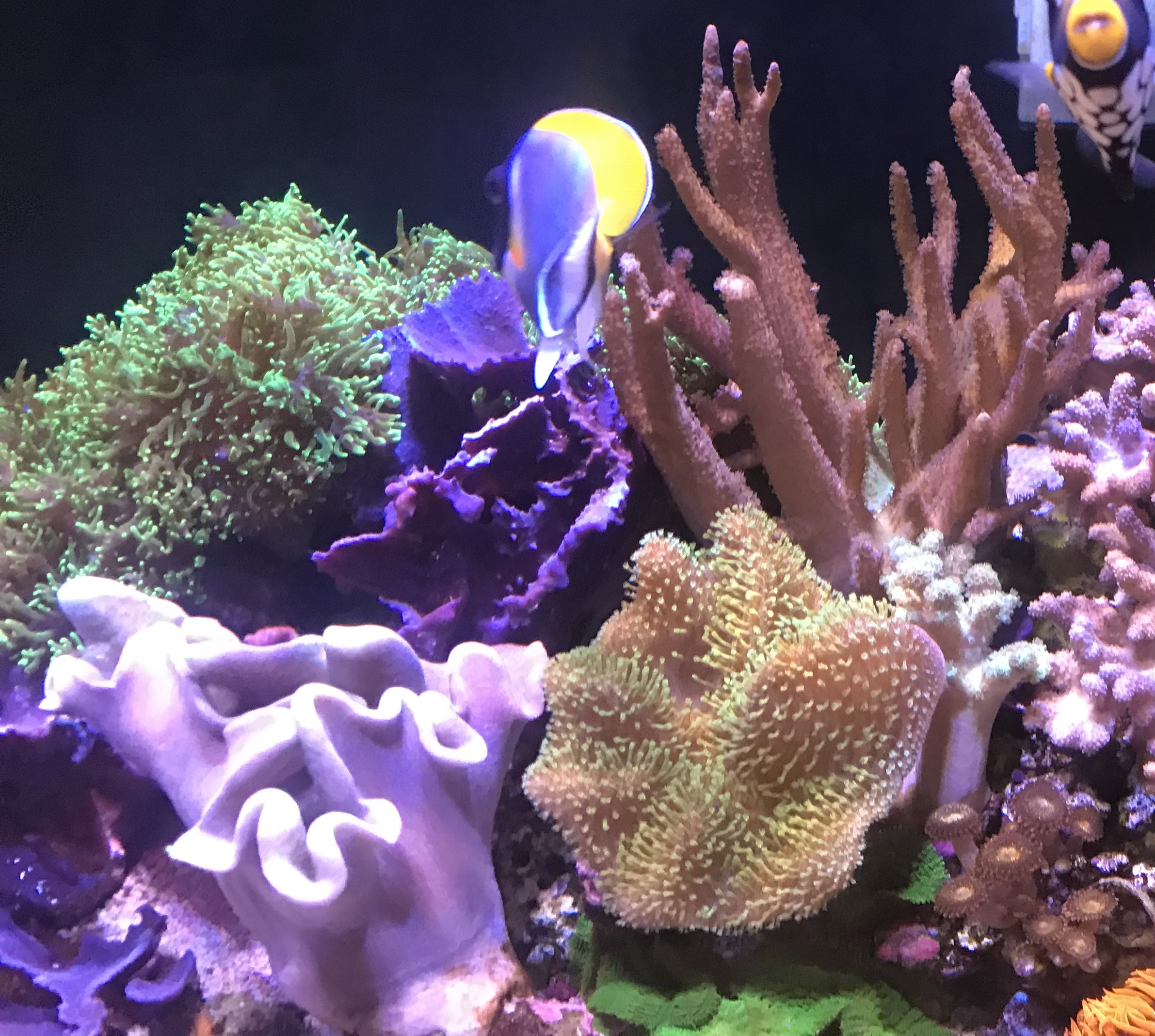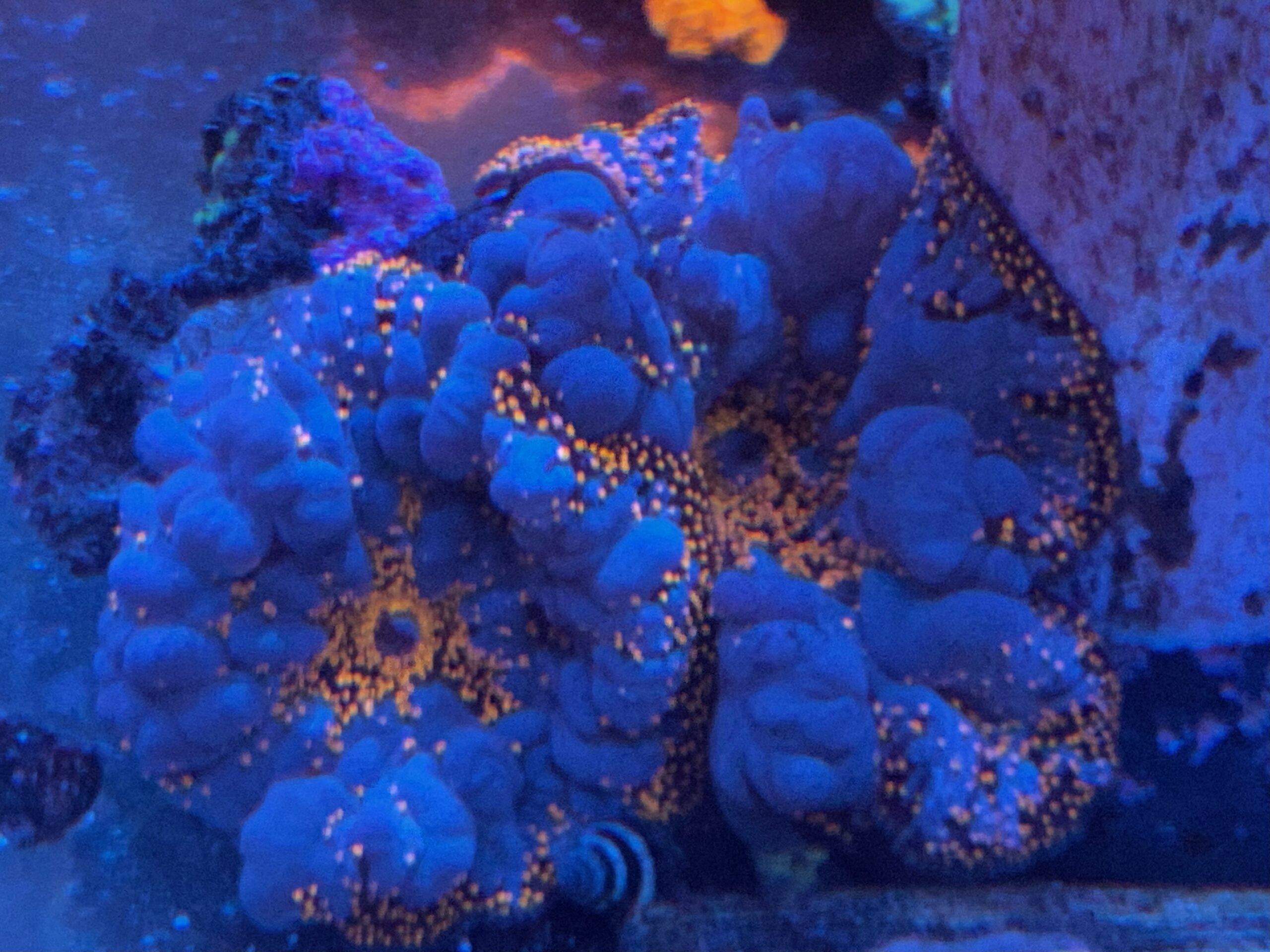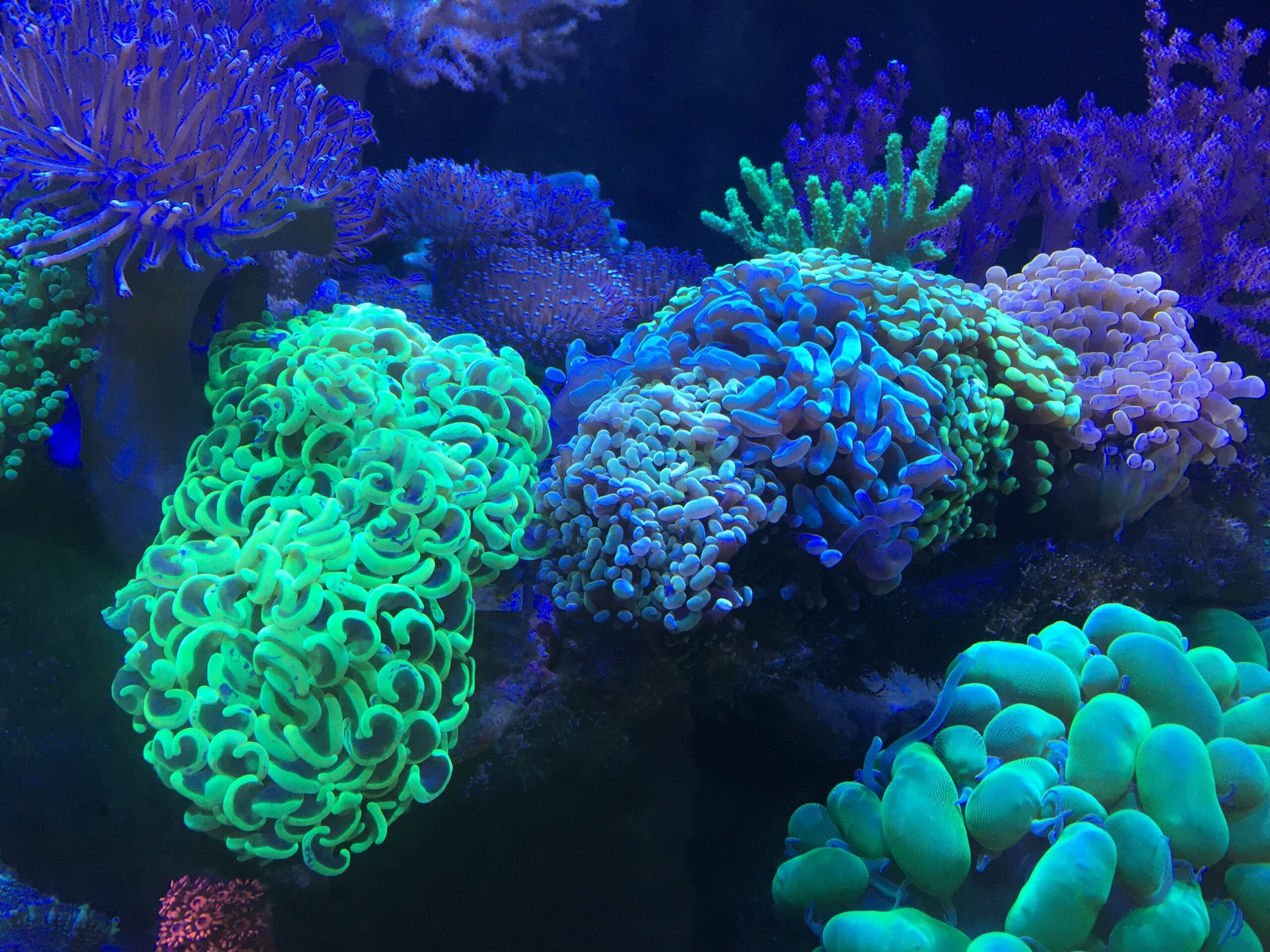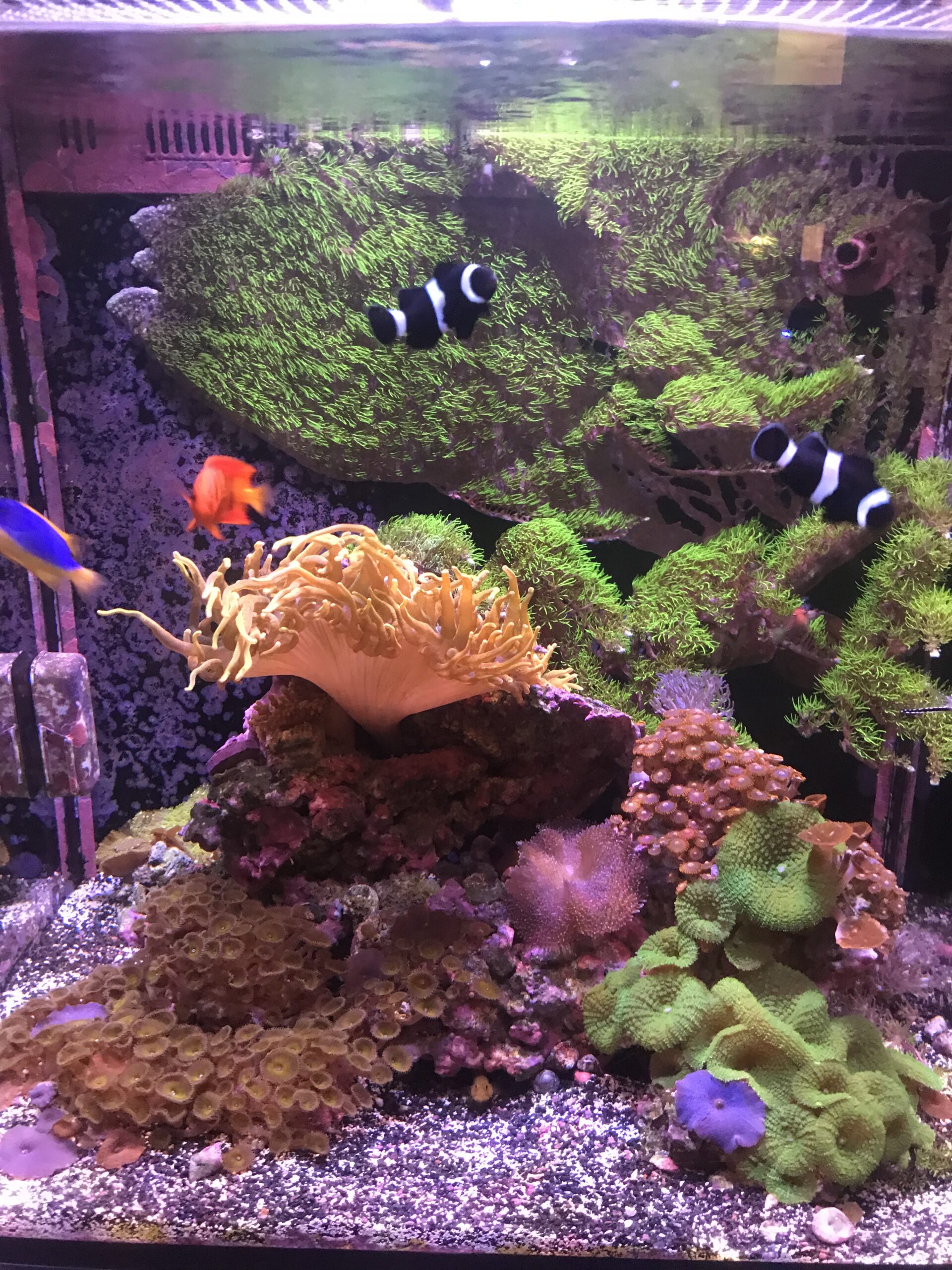There are many fun aspects to setting up a new tank, from planning and getting the equipment and then on to aquascaping the tank. But to me, the most fun aspect is selecting and adding the corals. This is when the tank goes from a stark white aquascape to a tank teeming with light and bright colors.
This should be one of the most stress-free aspects of setting up a new tank, but there can also be some stress as the mindset of most of us when we set up a new tank is will the new inhabitants, and especially the corals, survive in this new setup. Is the water chemistry right, is there too much or too little light, how about the flow, these are all worries that we have when we set up a new tank.

These are not unwarranted concerns, but if you have done things right and not done anything stupid, and sadly most of us have, corals are much more resilient than we give them credit for, but when starting a new tank, or on any tank for that matter, the key is to go slow and be patient.
So when adding the first corals only a few “test” corals should be added just to make sure that they will survive. These test corals should be inexpensive, hardy, fast-growing and if possible colorful. More on them below. As an added note, these corals should survive for at least a couple of weeks, and even better for a month before any additional corals are added.
In my opinion, the first corals to be added to a new tank should come from a local fish shop (LFS) for a couple of reasons. First, being able to see and learn to differentiate healthy from sick corals will be indispensable as you keep your tank so that you learn to tell when a coral is not doing well so that steps can be made to intervene if this occurs.

Also, if the shop has more than one of these corals it is possible to compare the health and growth of the coral you get with those at the shop. This will hopefully provide further insight if something is being done incorrectly. In this regard, if something does go wrong and these corals do not do well or die, having an LFS to bring water to so that it can be tested can further help should there be a problem that is being missed. This gets back to selecting a good LFS from the start that will help reduce the likelihood of failure.
For those of you who do not have an LFS with which to work, you might try to find a local society or local hobbyists with whom to work and this applies to everyone. These hobbyists cannot only help procure inexpensive corals, but they can also offer insight and help should problems arise. While some online vendors, websites, and blogs can provide good information, they are usually not quite as useful as a face-to-face discussion with a fellow hobbyist.
Up until the last ten years or so, when the first corals were added to a tank, they were more often than not full colonies of wild corals. Because of this, it was easy to fill a tank quickly, but by the same token if things went sideways whole colonies would die overnight. Today however things are significantly different, in that (except for soft corals and some large polyp stony LPS corals,) most tanks start out being filled with coral fragments, or frags, for short.

Also unlike in the past, most tanks now start with sps corals as the main focus, whereas in the past most new hobbyists started with soft corals then progressed to LPS corals, and then moved on to sps corals as they gained experience. This is undoubtedly due to how much our knowledge and husbandry for keeping these animals has improved, but to me at least it is still a bit scary to see so many individuals starting with what are undoubtedly the more difficult of the corals to keep.
Regardless of which corals are going to be the “test” corals the goal is still to start with healthy individual corals that will thrive in the type of tank that has been chosen. For soft corals like leather corals, mushrooms, and Sinularia, the corals should look firm with no black spots or deteriorating areas. They should move slightly in the flow and in the best case for leathers and Sinularias the polyps should be extended.

If their polyps are not extended this is not necessarily a sign of a problem in that if they have been touched recently or if the fish in their tank are pickers, the polyps will remain retracted. If you are not sure, ask the dealer to hold the coral until you see polyp extension. As with this whole process, there is no advantage to rushing, patience will be rewarded in the long run. These are the easiest of corals to keep, so even if LPS or SPS corals will be the dominant corals in the tank, starting with soft corals is still not a bad idea.
Lastly, and I advise this with any coral, smell it. While smelling a soft coral or any coral is not like smelling a freshly baked pie, it will tell you if anything is rotting that you have missed. All corals will smell like the sea when healthy and like something is rotting when something is amiss. Over time you will learn to recognize these different smells as they are always a good indicator of both good and bad.

Good first corals in this group are Sarcophyton, Sinularia, Lobophyton, and mushrooms. I would avoid Xenia, Anthelia, and Star polyps as some of these are difficult to acclimate at first, but once they take off they can overwhelm a tank.
If LPS corals like Euphyllia, Bubble, Goniopora, or Elegance corals are going to be the first corals chosen these should be open with their polyps moving in the flow of the tank. Their polyps should be fully extended and look inflated. Avoid any that are closed or half-closed or that have damage to their skeletons. There should also not be any areas in the tissue with what looks like brown jelly on it.

These corals are prone to damage during shipping which may not manifest itself for a few days after shipping so ask how long the coral has been in a tank. These corals are also one of the best corals to do the smell test on as their polyps can sometimes hide the damage that our noses can detect. On adding these corals to a new tank, they should open within 24 hours at the maximum.
If after that time they are still fully closed, you should look to understand why and rectify it. For first corals in this group Bubble corals and wall-type Euphyllia (Fimbriaphyllia,) would be good first choices. I would avoid Torch corals due to their price and stinging of other corals and Goniopora due to their difficulty in new tanks.
The last group of corals the small-polyp stony corals (SPS) are now what the majority of reefkeepers have in their tanks. Due to their coloration, which can be amazing, availability, and seemingly infinite variety these corals have become the gold standard in many reefs. Choosing good “test” versions of these corals is critical in that if they fail, it usually leaves a bad taste in the mouth of the new hobbyist.

While Acropora corals are the coral that every SPS lover wants to house in their tanks, there are better corals to start out with. SPS coral species like Pocillopora, Montipora, and Stylophora might all be better first choices owing to their seemingly greater hardiness, rapid growth, and ease of being fragged. And these corals should not be sold short and many have coloration that rivals that of the Acropora. Frags of these corals are widely available not only in shops but also from other hobbyists owing to their rapid growth.
When selecting the first pieces to be added to a tank the frags should be uniformly colored with no dead areas, especially at the bottom near the plug. They should be firmly attached to the plug and in the best instance encrusted onto the plug. This shows that they have been healthy and growing for some time. They should have good coloration and not look dull or gray, as this usually indicates that some parameter is not to their liking. But their coloration should also not be too vivid as this can indicate that they are stressed or even have expelled their zooxanthellae.
If they are overly colorful even out of the bluest light they may smell sickeningly sweet, if they show this it is an indicator that they are stressed and should be avoided. Good first corals are Stylophora and Pocillopora, but not P. damicornis due to it producing so many offspring. Acropora and Seriatopora should not be added until some experience has been gained with these corals.

The guidelines outlined above are just general rules for selecting the first corals to add to a new reef tank. As with everything in this hobby going slow is key and developing patience will be rewarded long-term. In this regard, it is best to start by adding only a few, no more than five, corals to start a new tank. These will provide a good test and if they fail it will not be totally devastating.
We all started at this same place and though all of us have lost corals, nothing is more disturbing than losing all of the first corals added to a tank. By starting with a small number if this happens it will not be quite as overwhelming and will hopefully not drive you from the hobby. Mistakes will always be made in this hobby, the key is to have them be small and not fatal, and this can especially be the case when choosing the first corals.


